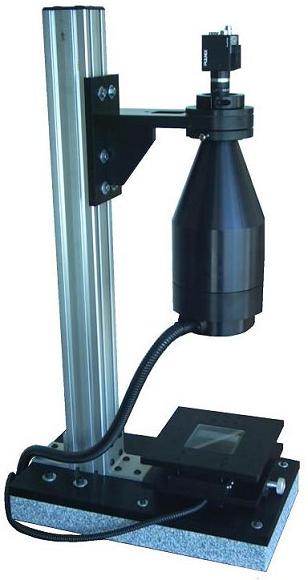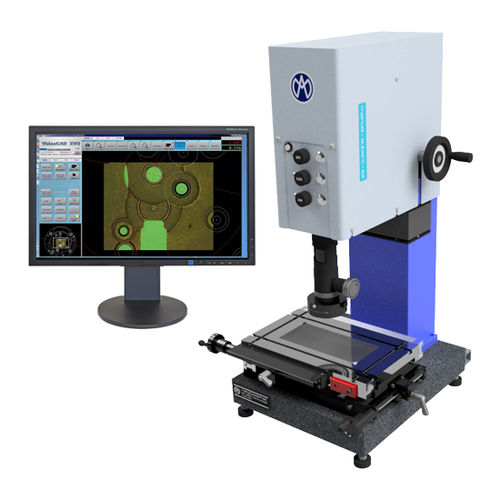Mastering how optical measurement systems enable real-time defect detection
Mastering how optical measurement systems enable real-time defect detection
Blog Article
Understanding Exactly How Optical Measurement Solution Enhance Top Quality Control Processes
When you're looking to enhance quality control processes, understanding optical measurement systems is important. Let's explore the essential aspects that make optical measurement a game-changer in quality monitoring.

The Basics of Optical Dimension Equipments
Optical dimension systems play a crucial duty in assuring item high quality across different industries. These systems utilize light-based modern technologies to collect exact data about physical attributes, such as measurements, surface area finish, and shade. By utilizing cameras, sensing units, and lasers, you can achieve non-contact dimensions that reduce the risk of destructive delicate items.
Recognizing the fundamentals of these systems is basic for efficient quality control. They run on principles like reflection, diffraction, and refraction, enabling you to analyze numerous materials and forms. The precision and rate of optical measurements make it possible for real-time tracking, which helps you recognize problems early in the manufacturing process.
In addition, these systems can be integrated with software for improved information analysis, producing a comprehensive top quality management technique. By leveraging optical measurement systems, you not just increase efficiency but also ensure your items meet strict top quality standards, eventually boosting consumer complete satisfaction.
Kinds of Optical Dimension Technologies
Numerous types of optical measurement modern technologies are available, each made to fulfill details requirements in quality assurance. You may run into laser triangulation, which measures distance by evaluating the angle of a shown laser beam of light. This modern technology is ideal for capturing exact measurements in 3D space.
One more option is structured light, where you forecast a collection of light patterns onto a surface to create a comprehensive 3D design. This technique functions well for complicated geometries.
After that there's interferometry, which can find minute adjustments in surface area accounts by assessing the disturbance patterns of light waves. This is specifically valuable for applications calling for nanometer accuracy.
You may likewise think about optical coherence tomography, which offers high-resolution images of internal attributes without harming the item. Each innovation serves different demands, so picking the ideal one is essential for achieving highest quality control outcomes.
Trick Benefits of Optical Dimension in High Quality Control
When it pertains to quality assurance, leveraging optical dimension modern technologies can considerably improve accuracy and performance. These systems enable you to capture detailed dimensions rapidly, reducing the time required for evaluations. You'll notice that optical dimensions can determine even the tiniest problems that could go unnoticed with traditional approaches, guaranteeing item consistency.
In addition, utilizing optical dimension systems commonly results in lowered waste and remodel, as you capture issues early in the manufacturing process. You'll likewise value the non-contact nature of numerous optical approaches, which reduces damages to delicate elements throughout assessment. This adaptability enables a wider array of applications across different products.
With real-time data collection, you can make educated choices promptly, improving your quality assurance procedures (optical measurement systems). Inevitably, incorporating optical measurement into your quality assurance strategy not only improves performance but likewise improves consumer contentment by supplying higher-quality items consistently
Just How Optical Dimension Equipment Improve Accuracy and Precision
Optical measurement systems improve precision and accuracy by boosting measurement resolution, permitting you to spot even the smallest variants. With real-time data analysis, you can make immediate changes and decisions, guaranteeing your procedures stay on track. This combination not just improves product high quality yet likewise simplifies your quality assurance initiatives.
Boosted Dimension Resolution
By leveraging sophisticated innovations, optical measurement systems significantly boost dimension resolution, resulting in improved accuracy and accuracy in quality assurance. These systems utilize innovative formulas and high-resolution cams to record minute details that typical methods typically miss. You'll discover a substantial distinction in the clearness of dimensions, permitting you to recognize even the least inconsistencies from specs. This boosted resolution helps remove guesswork, giving you with data that's both trusted and workable. As an outcome, you can make even more enlightened choices and keep tighter resistances in your processes. Eventually, boosted dimension resolution not only increases item top quality yet likewise enhances resource usage, ensuring that you meet client assumptions consistently.
Real-Time Data Analysis
Although standard measurement systems commonly depend on delayed go to this website data handling, real-time information analysis in optical dimension systems changes the means you keep an eye on high quality. You'll experience enhanced accuracy given that you can instantly contrast measurements versus predefined requirements. Additionally, real-time information assists you build up valuable understandings over time, fine-tuning your top quality control procedures.
Integrating Optical Dimension Into Existing Top Quality Control Processes
Integrating optical dimension into your existing quality assurance procedures can significantly enhance precision and performance. By integrating optical measurement systems, you can enhance data collection, minimizing human error while raising the speed of assessments. Start by recognizing bottom lines in your assembly line where optical dimensions will certainly offer the most value.
Following, train your team on the brand-new modern technology, ensuring they recognize how to make use of the systems effectively. This training will certainly assist them analyze results quickly and precisely.
You need to additionally establish a method for incorporating optical data into your existing top quality monitoring software program. This integration permits real-time analytics and reporting, boosting decision-making.
On a regular basis examine the information and responses from your team to determine any type of locations for enhancement. With these actions, you'll not just enhance your quality assurance processes yet also promote a society of continual improvement within your organization.
Case Researches: Effective Application of Optical Dimension Solutions
In this area, you'll discover just how optical dimension systems have transformed quality assurance in industries such as aerospace and automobile manufacturing - optical measurement. You'll see real-world instances of how these innovations enhanced precision and efficiency. These instance researches highlight the tangible benefits of integrating optical systems into production processes
Aerospace Market Applications
As the aerospace market faces enhancing demands for accuracy and efficiency, firms are turning to optical dimension systems to enhance their quality control processes. A leading aircraft manufacturer integrated optical dimension modern technology to check wind turbine blades, minimizing examination time by 50% while boosting precision.
Automotive Production Success
Optical dimension systems have actually likewise made considerable strides in the vehicle production industry, where accuracy is crucial to automobile performance and security. BMW incorporated optical dimension for body assembly, making certain elements fit flawlessly, which minimized rework and raised production performance. These situation research studies demonstrate how optical dimension systems encourage you to attain tighter tolerances, decrease waste, and raise overall item high quality.
Future Fads in Optical Measurement and Quality Assurance
While advancements in innovation proceed to great site improve the manufacturing landscape, the future of optical dimension and quality assurance looks promising - optical measurement system. You'll see a considerable change towards automation and AI integration, making it possible for systems to assess information in real-time. This implies quicker decision-making and minimized human error, ultimately enhancing product top quality
In Addition, as 3D imaging innovation enhances, you'll benefit from more exact measurements of complex geometries, making it easier to keep tight resistances. The surge of cloud-based remedies will additionally allow you to accessibility information remotely, facilitating partnership and streamlining operations.
Furthermore, sustainability will certainly play an essential duty in future advancements. Expect optical measurement systems to concentrate on power performance and waste decrease, lining up with international ecological objectives. By embracing these patterns, you can ensure your high quality control processes remain innovative, assisting your organization prosper in a progressively open market.
Frequently Asked Questions
What Industries Benefit The Majority Of From Optical Measurement Solutions?
You'll find sectors like production, aerospace, and automotive benefit most from optical measurement systems. These markets rely upon exact measurements for top quality assurance, making certain products fulfill rigid requirements and boosting general functional effectiveness.
Exactly how Do I Select the Right Optical Measurement System?
To choose the ideal optical dimension system, analyze your specific needs, consider the sort of measurements you need, review the system's precision, and guarantee it fits your spending plan and operational demands.
What Are Usual Challenges in Applying Optical Measurement Equipments?
You'll deal with obstacles like assimilation with existing systems, guaranteeing exact calibration, educating personnel efficiently, and handling expenses. Identifying these hurdles early helps you create strategies to overcome them and effectively implement optical measurement systems.

Exist Training Resources Available for Optical Measurement Technologies?
Yes, there're different training resources offered for optical dimension modern technologies. You can discover online courses, webinars, and workshops provided by sector experts or organizations. These sources can assist you properly carry out and use these innovative systems.
How Do Optical Dimension Systems Contrast to Standard Measurement Methods?
Optical dimension systems provide better accuracy and rate contrasted to standard methods. They reduce human error, enable non-contact measurements, and supply real-time information analysis, making them much more efficient for various applications in quality assurance.
Conclusion

Optical measurement systems boost accuracy and accuracy by improving measurement resolution, allowing you to discover also the tiniest variations.By leveraging innovative innovations, optical measurement systems significantly enhance measurement resolution, leading to boosted precision and accuracy in top quality control.Although traditional measurement systems usually depend on postponed data processing, real-time data analysis in optical dimension systems revolutionizes the method you keep an eye on quality.As the aerospace market deals with increasing demands for precision and effectiveness, companies are transforming to optical measurement systems to enhance their high quality control procedures. Exactly How Do Optical Measurement Solutions Contrast to Traditional Measurement Approaches?
Report this page